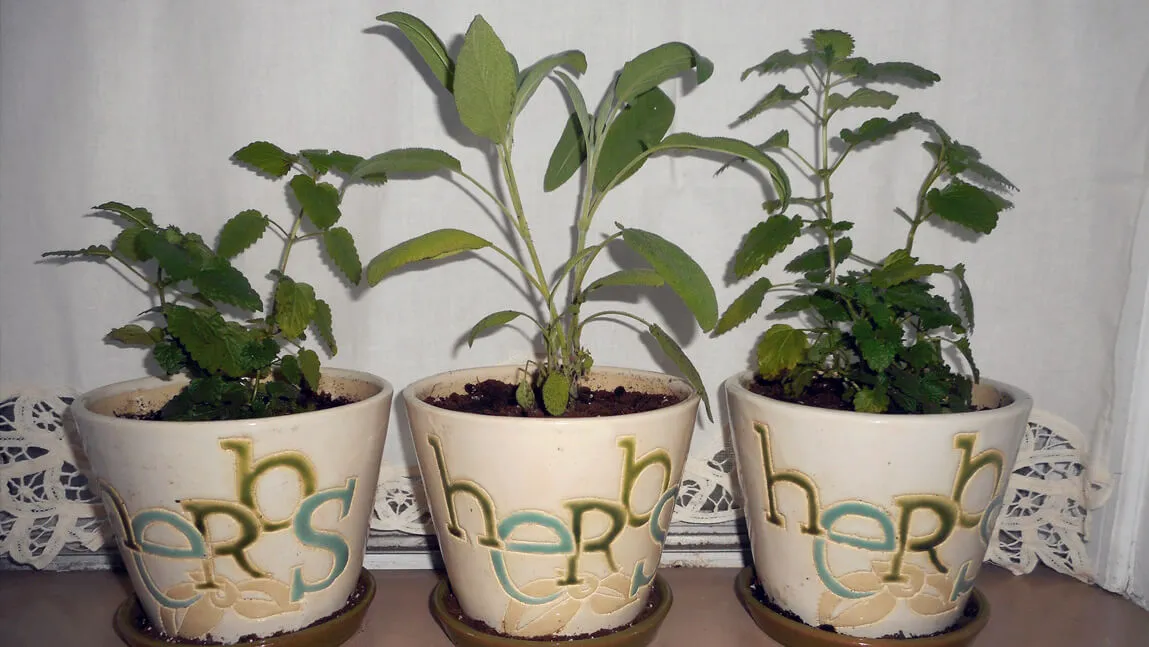By Deborah J. Benoit
Extension Master Gardener
University of Vermont
If you already cook with herbs, you know how much flavor they add to food. But if they are dried and reside in jars on a shelf in your kitchen, you may be surprised to discover what using fresh herbs can do.
Growing your own herbs isn't difficult and can be done in a garden bed or in containers.
SAGE
You're probably familiar with sage (Salvia officinalis) for its use in seasoning the stuffing in your holiday turkey. It's an easy to grow perennial that's drought tolerant.
You can grow sage from seed, by rooting tip cuttings or purchasing seedlings. However you choose to begin, place in full sun in soil that drains well.
Harvest by cutting just above a pair of leaves. Cooler temperatures won't bother sage, so you can keep on harvesting late into the fall. After overwintering in the garden, prune back any woody stems to promote new growth.
For more visual interest, consider tricolored sage with its green, white and purple leaves. Tricolor sage is less cold-tolerant, so it's best planted outdoors as an annual or grown in pots to be overwintered indoors.
BASIL
If you're a fan of pesto, basil (Ocimum basilicum) is a perfect choice to include in your herb garden.
It can be grown from seed (a plus if you're planning on growing a number of plants) or you can purchase seedlings. Select a location that will provide full sun and soil that drains well. Wait until any danger of frost has passed before planting.
Basil loves warm temperatures. It's a tender annual and succumbs at the first frost.
To encourage branching and a fuller plant, pinch the growing tips. If flower buds appear, be sure to pinch them off as well since flowering will reduce the herb's flavor.
In addition to common sweet basil, there are many varieties to choose from, including purple, lemon, Thai or cinnamon basil for a tasty twist on this flavorful herb.
DILL
Dill (Anethum graveolens) is a tender annual best grown in a garden bed in full sun. Seeds can be sown directly in the soil after the danger of frost has passed. By sowing seeds over an extended period of time, you can enjoy dill throughout the season.
After dill flowers, the foliage will lose some of its flavor, but those flowers are also edible. Any mature, unharvested flowers can be dried by hanging upside down in a paper bag. When dry, the seeds will fall out into the bag to be collected for use.
Dill's feathery foliage and long-stemmed flowers make attractive additions to cut flower arrangements. If you're interested in attracting butterflies to your garden, dill is a host plant for black swallowtail caterpillars.
MINT
Peppermint (Mentha piperita) and spearmint (Mentha spicata) are perhaps the best known types of mint, but chocolate, orange and apple offer up fun possibilities.
Mint can be used in cooking and baking or brewed for tea. It can be used fresh or preserved by drying or freezing.
Mint is among the easiest herbs to grow. Cuttings root easily, or it can be grown from seed. Mint is a hardy perennial that will grow in partial sun or partial shade. It prefers moist, well-drained soil.
Be aware that mint can be an overachiever, pushing its way into beds where it's not wanted. It's a good idea to grow it in a container even when grown outside in the garden.
Whether it's the sight of a collection of herbs in the garden, their scent as you gently brush their foliage or the flavor added to food, there are plenty of reasons to grow herbs at home.
